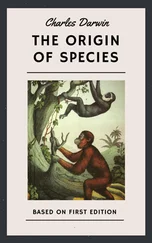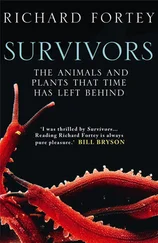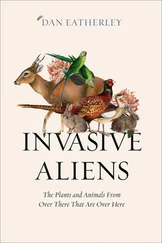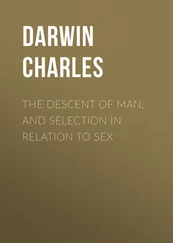Charles Darwin - The Variation of Animals and Plants under Domestication — Volume 2
Здесь есть возможность читать онлайн «Charles Darwin - The Variation of Animals and Plants under Domestication — Volume 2» — ознакомительный отрывок электронной книги совершенно бесплатно, а после прочтения отрывка купить полную версию. В некоторых случаях можно слушать аудио, скачать через торрент в формате fb2 и присутствует краткое содержание. Жанр: foreign_antique, foreign_prose, на английском языке. Описание произведения, (предисловие) а так же отзывы посетителей доступны на портале библиотеки ЛибКат.
- Название:The Variation of Animals and Plants under Domestication — Volume 2
- Автор:
- Жанр:
- Год:неизвестен
- ISBN:нет данных
- Рейтинг книги:3 / 5. Голосов: 1
-
Избранное:Добавить в избранное
- Отзывы:
-
Ваша оценка:
- 60
- 1
- 2
- 3
- 4
- 5
The Variation of Animals and Plants under Domestication — Volume 2: краткое содержание, описание и аннотация
Предлагаем к чтению аннотацию, описание, краткое содержание или предисловие (зависит от того, что написал сам автор книги «The Variation of Animals and Plants under Domestication — Volume 2»). Если вы не нашли необходимую информацию о книге — напишите в комментариях, мы постараемся отыскать её.
The Variation of Animals and Plants under Domestication — Volume 2 — читать онлайн ознакомительный отрывок
Ниже представлен текст книги, разбитый по страницам. Система сохранения места последней прочитанной страницы, позволяет с удобством читать онлайн бесплатно книгу «The Variation of Animals and Plants under Domestication — Volume 2», без необходимости каждый раз заново искать на чём Вы остановились. Поставьте закладку, и сможете в любой момент перейти на страницу, на которой закончили чтение.
Интервал:
Закладка:
REVERSION TO CHARACTERS DERIVED FROM A CROSS, IN THE CASE OF SUB-VARIETIES, RACES, AND SPECIES.
When an individual having some recognisable peculiarity unites with another of the same sub-variety, not having the peculiarity in question, it often reappears in the descendants after an interval of several generations. Every one must have noticed, or heard from old people of children closely resembling in appearance or mental disposition, or in so small and complex a character as expression, one of their grandparents, or some more distant collateral relation. Very many anomalies of structure and diseases (13/16. Mr. Sedgwick gives many instances in the 'British and Foreign Med. — Chirurg. Review' April and July 1863 pages 448, 188.) of which instances have been given in the last chapter, have come into a family from one parent, and have reappeared in the progeny after passing over two or three generations. The following case has been communicated to me on good authority, and may, I believe, be fully trusted: a pointer-bitch produced seven puppies; four were marked with blue and white, which is so unusual a colour with pointers that she was thought to have played false with one of the greyhounds, and the whole litter was condemned; but the gamekeeper was permitted to save one as a curiosity. Two years afterwards a friend of the owner saw the young dog, and declared that he was the image of his old pointer-bitch Sappho, the only blue and white pointer of pure descent which he had ever seen. This led to close inquiry, and it was proved that he was the great-great-grandson of Sappho; so that, according to the common expression, he had only 1/16th of her blood in his veins. I may give one other instance, on the authority of Mr. R. Walker, a large cattle- breeder in Kincardineshire. He bought a black bull, the son of a black cow with white legs, white belly and part of the tail white; and in 1870 a calf the gr. — gr. — gr. — gr. — grandchild of this cow was born coloured in the same very peculiar manner; all the intermediate offspring having been black. In these cases there can hardly be a doubt that a character derived from a cross with an individual of the same variety reappeared after passing over three generations in the one case, and five in the other.
When two distinct races are crossed, it is notorious that the tendency in the offspring to revert to one or both parent-forms is strong, and endures for many generations. I have myself seen the clearest evidence of this in crossed pigeons and with various plants. Mr. Sidney (13/17. In his edition of 'Youatt on the Pig' 1860 page 27.) states that, in a litter of Essex pigs, two young ones appeared which were the image of the Berkshire boar that had been used twenty-eight years before in giving size and constitution to the breed. I observed in the farmyard at Betley Hall some fowls showing a strong likeness to the Malay breed, and was told by Mr. Tollet that he had forty years before crossed his birds with Malays; and that, though he had at first attempted to get rid of this strain, he had subsequently given up the attempt in despair, as the Malay character would reappear.
This strong tendency in crossed breeds to revert has given rise to endless discussions in how many generations after a single cross, either with a distinct breed or merely with an inferior animal, the breed may be considered as pure, and free from all danger of reversion. No one supposes that less than three generations suffices, and most breeders think that six, seven, or eight are necessary, and some go to still greater lengths. (13/18. Dr. P. Lucas, 'Hered. Nat.' tome 2 pages 314, 892: see a good practical article on the subject in 'Gardener's Chronicle' 1856 page 620. I could add a vast number of references, but they would be superfluous.) But neither in the case of a breed which has been contaminated by a single cross, nor when, in the attempt to form an intermediate breed, half-bred animals have been matched together during many generations, can any rule be laid down how soon the tendency to reversion will be obliterated. It depends on the difference in the strength or prepotency of transmission in the two parent-forms, on their actual amount of difference, and on the nature of the conditions of life to which the crossed offspring are exposed. But we must be careful not to confound these cases of reversion to characters which were gained by a cross, with those under the first class, in which characters originally common to BOTH parents, but lost at some former period, reappear; for such characters may recur after an almost indefinite number of generations.
The law of reversion is as powerful with hybrids, when they are sufficiently fertile to breed together, or when they are repeatedly crossed with either pure parent-form, as in the case of mongrels. It is not necessary to give instances. With plants almost every one who has worked on this subject, from the time of Kolreuter to the present day, has insisted on this tendency. Gartner has recorded some good instances; but no one has given more striking ones than Naudin. (13/19. Kolreuter gives curious cases in his 'Dritte Fortsetzung' 1766 ss. 53, 59; and in his well-known 'Memoirs on Lavatera and Jalapa.' Gartner 'Bastarderzeugung' ss. 437, 441, etc. Naudin in his "Recherches sur l'Hybridite" 'Nouvelles Archives du Museum' tome 1 page 25.) The tendency differs in degree or strength in different groups, and partly depends, as we shall presently see, on whether the parent-plants have been long cultivated. Although the tendency to reversion is extremely general with nearly all mongrels and hybrids, it cannot be considered as invariably characteristic of them; it may also be mastered by long-continued selection; but these subjects will more properly be discussed in a future chapter on Crossing. From what we see of the power and scope of reversion, both in pure races, and when varieties or species are crossed, we may infer that characters of almost every kind are capable of reappearing after having been lost for a great length of time. But it does not follow from this that in each particular case certain characters will reappear; for instance, this will not occur when a race is crossed with another endowed with prepotency of transmission. Sometimes the power of reversion wholly fails, without our being able to assign any cause for the failure: thus it has been stated that in a French family in which 85 out of above 600 members, during six generations, had been subject to night-blindness, "there has not been a single example of this affection in the children of parents who were themselves free from it." (13/20. Quoted by Mr. Sedgwick in 'Med. — Chirurg. Review' April 1861 page 485. Dr. H. Dobell in 'Med. — Chirurg. Transactions' volume 46 gives an analogous case in which, in a large family, fingers with thickened joints were transmitted to several members during five generations; but when the blemish once disappeared it never reappeared.)
REVERSION THROUGH BUD-PROPAGATION — PARTIAL REVERSION, BY SEGMENTS IN THE SAME FLOWER OR FRUIT, OR IN DIFFERENT PARTS OF THE BODY IN THE SAME INDIVIDUAL ANIMAL.
In the eleventh chapter many cases of reversion by buds, independently of seminal generation, were given — as when a leaf-bud on a variegated, a curled, or laciniated variety suddenly reassumes its proper character; or as when a Provence-rose appears on a moss-rose, or a peach on a nectarine-tree. In some of these cases only half the flower or fruit, or a smaller segment, or mere stripes, reassume their former character; and here we have reversion by segments. Vilmorin (13/21. Verlot 'Des Varietes' 1865 page 63.) has also recorded several cases with plants derived from seed, of flowers reverting by stripes or blotches to their primitive colours: he states that in all such cases a white or pale-coloured variety must first be formed, and, when this is propagated for a length of time by seed, striped seedlings occasionally make their appearance; and these can afterwards by care be multiplied by seed.
Читать дальшеИнтервал:
Закладка:
Похожие книги на «The Variation of Animals and Plants under Domestication — Volume 2»
Представляем Вашему вниманию похожие книги на «The Variation of Animals and Plants under Domestication — Volume 2» списком для выбора. Мы отобрали схожую по названию и смыслу литературу в надежде предоставить читателям больше вариантов отыскать новые, интересные, ещё непрочитанные произведения.
Обсуждение, отзывы о книге «The Variation of Animals and Plants under Domestication — Volume 2» и просто собственные мнения читателей. Оставьте ваши комментарии, напишите, что Вы думаете о произведении, его смысле или главных героях. Укажите что конкретно понравилось, а что нет, и почему Вы так считаете.












